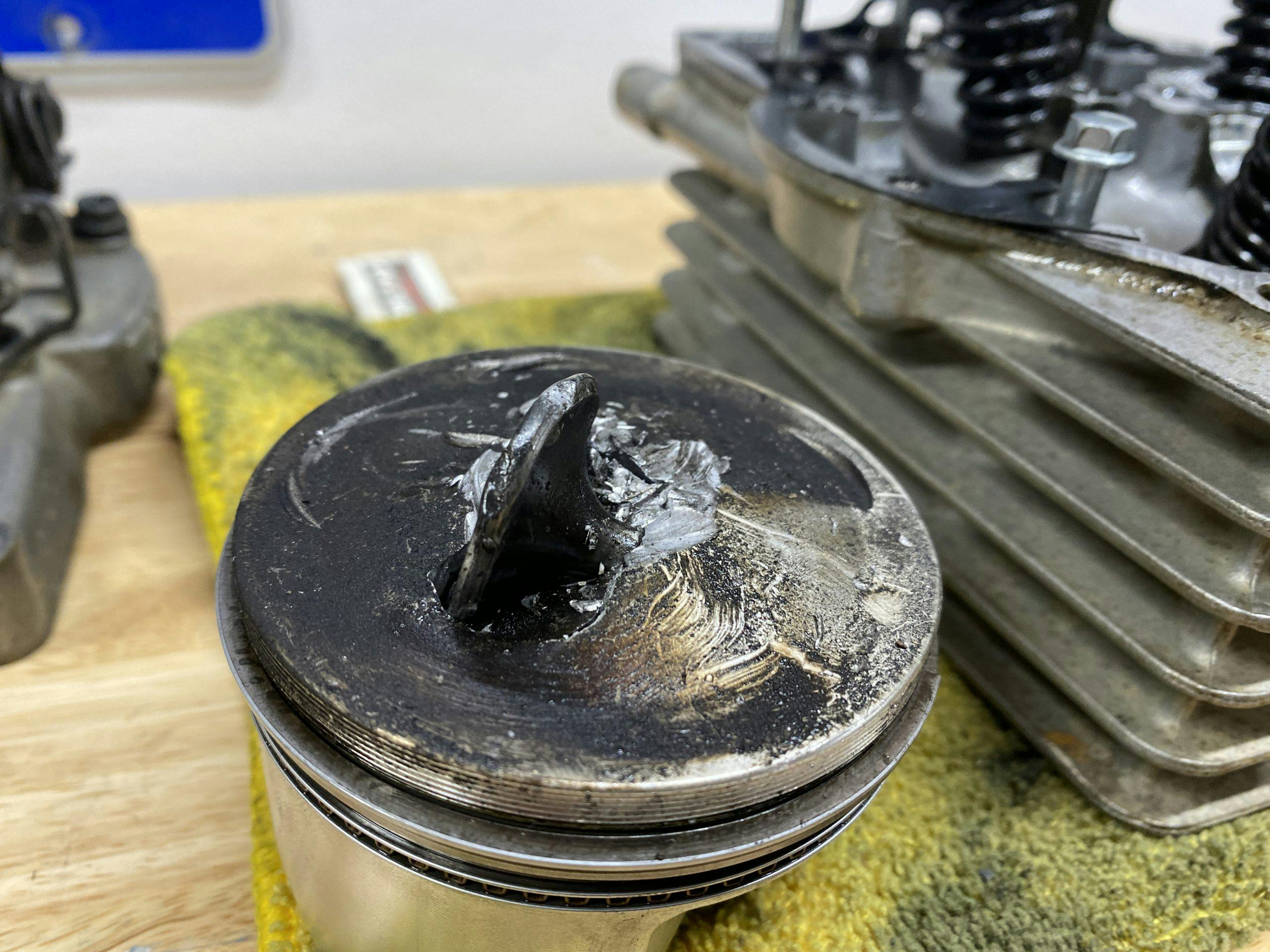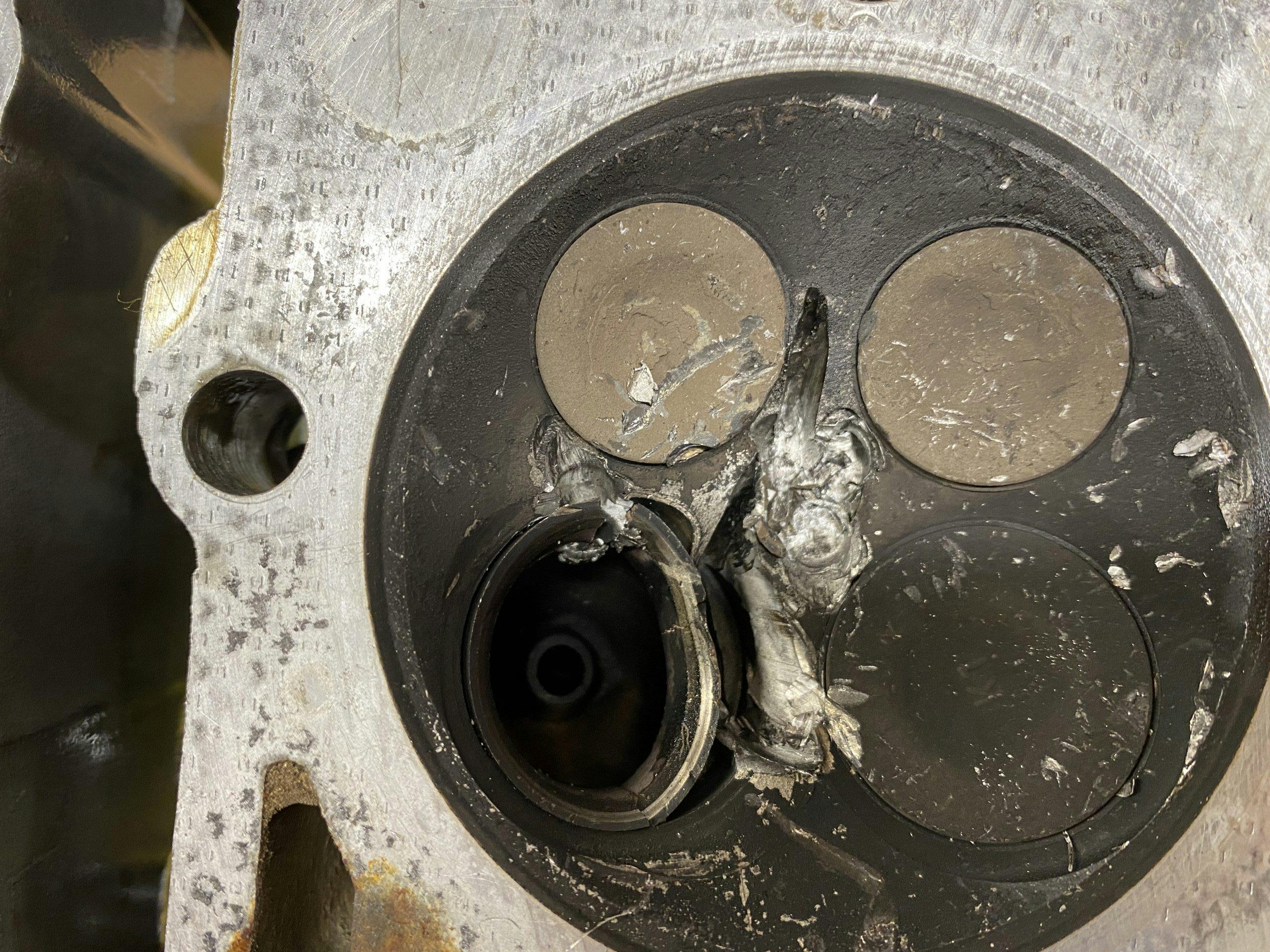The fragility of the durable (and other things that can kill your engine)
In my time playing with engines, one thing never fails to amaze me: the sheer durability of these pieces of machinery. I’ve seen an engine with a hole burned in one piston, a missing valve on another cylinder, and a horribly corroded spark plug on another. Not only did it run, it even idled fairly smoothly. Based on tortured troopers like this one, I started to believe that engines really were, more or less, bulletproof.
My reality check came by way of a tired valve spring.

The engine at the center of this back-to-reality story is my 1989 Honda XR250R. You might even recognize it from this past spring: A valve had crashed through the piston, and I used the opportunity to teach a friend about building engines. The Honda XR’s mill is renowned as a workhorse. The engine requires little more than fresh oil and the occasional rocker adjustment, and since owners regularly thrash them in the real world, the XR’s reputation for reliability is well-earned. I had high hopes for my refreshed 250 back in April, but Thanksgiving week I stood with another valve head that had crashed through the crown of the piston and a cylinder head that could be cast in a horror movie.
So what gives? If engines are so durable, why does one valve spring, one that’s lost only a tiny percentage of its tension, give me another aluminum paperweight? The answer is that catastrophe isn’t caused by a single problem; it’s triggered by an accumulation of smaller issues. Though engines are precision machines that require tight tolerances to function at maximum output, most will still generate (diminished) power with a worn-out this or tired that—and continue thumping along for a surprisingly long time. My XR’s valvetrain was likely suffering from general mechanical weariness and some lazy assembly.
I understand engines pretty well, but I’m not an engineer. Staring at the exact same failure a second time made me call in the big guns. I brewed some coffee and called our resident engine-builder Davin Reckow. We concluded that the valve wasn’t closing fast enough to avoid an inappropriate advance from the piston. Kisses are great when consensual, but valves and pistons repel each other’s advances with gusto. When they fail to do so, it’s a very Romeo-and-Juliet situation—everyone involved dies.

The cause of my piston’s valve disaster can likely be traced to engine-builder error. That’s right, I’m taking the blame here. The cylinder head was slightly damaged the last time this situation occurred and I had to grind the valve seat just slightly for one of the intake valves. That tucked the valve into the head just a bit more, and I should have shimmed the valve spring to achieve the proper seat pressure … but I didn’t. I leaned on the assumption that these engines are so indestructible that a slight reduction in seat pressure wouldn’t be a big deal.
Tolerance for wear is one thing; tolerance for neglect is another. My mistake was confusing these two, and now I have a rebuild slated as a winter project. The cylinder still looks great, so I’m probably looking at a new piston, rings, and a whole heap of machine time to bring this cylinder head back to usable condition. That’s not a cheap lesson, but it’s a lesson I have now learned and will never forget. This piston is going right in front of the workbench to remind me that engines are both incredible durable and yet surprisingly fragile. Let this be a reminder for you, too.



